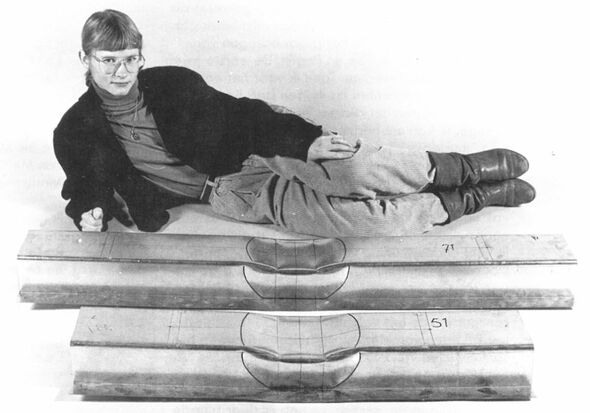In Memoriam | Monique Bakker
Last week we were dismayed to receive the sad news that our former colleague Monique Bakker (1961) has passed away. Monique joined us in 1979 when she began her first degree in Architecture, Building and Planning. She was a perfectionist and was keen to thoroughly understand her courses. She soon discovered her talent for mechanics and she graduated in the field of steel structures, her favorite material.
Cold-formed steel sections came to Monique's attention while she was an undergraduate, thanks to Professor Peköz (Cornell, USA), who was taking a sabbatical at TU/e. Professor Stark (TU/e) and he supervised Monique during her doctoral study on web-crippling of trapezoidal sheeting. Using carefully designed experiments and an ingenious yield-line model, she succeeded in predicting the complex web-crippling behaviour for short spans, which earned her a Vreedenburgh Award in 1994.
After gaining her PhD, Monique joined the Department of the Built Environment in Eindhoven as assistant professor of Applied Mechanics, this time at the invitation of Professor Kerstens (TU/e). She transformed the course Finite Element Method by, alongside theory, emphasizing practical matters such as modeling and possible (solving) errors. Having completed this course, students were able to both run simulations and, above all, to generate from them meaningful and correct results. In addition, she developed the course Non-linear Finite Element Method, and she was co-promotor of a doctoral project that built upon her own research.
Read on below the photo.
In 2002 her ASPASIA proposal was accepted and as an associate professor, and working with a postdoc, she embarked on fundamental research on plate buckling. She developed a new theory that performed very well and which, thanks to its elegant formulation, could be used in larger models. In this context, she also recognized the potential of mathematical software, such as Mathematica, for our unit. In addition, she was the chair of the Permanent Committee on Academic Practice and she supervised many graduate students and undergraduates during projects.
In all her work, her academic integrity was striking. For Monique, there was only ever one argument during substantive discussions: the scientific one. Any other arguments of a political, social or other nature she very deliberately filtered out, her sole aim being to achieve a purely scientific debate. And this made her very popular with many of her colleagues.
Perhaps it was this idealistic attitude, her perfectionism and her drive that led her to feel less and less equipped to meet all the demands facing the changing university world: being required to deliver more efficient and excellent research resulting in prestigious publications, in addition to providing good education, securing research funding, while also playing many administrative roles. She felt she could not meet all these demands without having to diminish her energetic supervision of each individual student.
This prompted her decision in 2009 to retrain as a high school math teacher and to leave our university. She went on to display the same engagement, dedication and drive in high schools. Fortunately, she left us a wonderful research portfolio, whose articles are still cited, and even now we are engaged in research that builds directly on her doctoral work. She is still with us.
With Monique's passing we are losing a highly conscientious and passionate teacher and scientist who always aimed to draw the best out of colleagues, students and herself, while following her (scientific) heart, steamrolling convention if need be. We wish her family and friends our heartfelt condolences.
Daily board of the Structural Engineering and Design Unit, Department of the Built Environment
Dr.ir. H. Hofmeyer
Prof.ir. H.H. Snijder
Dr.ir. S.P.G. Moonen
Ir. H.M. Lamers
![[Translate to English:]](/fileadmin/_processed_/4/6/csm_NW_In_Memoriam_Monique_Bakker_met_foto_9805ed4fc1.jpg)


Discussion